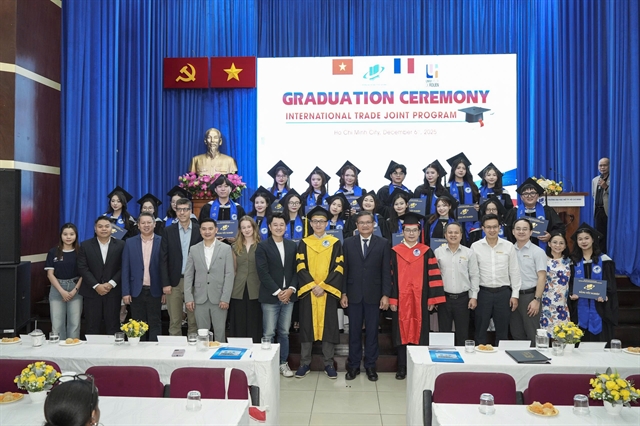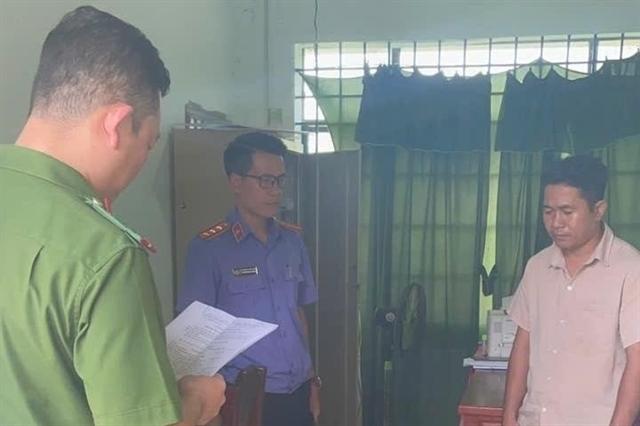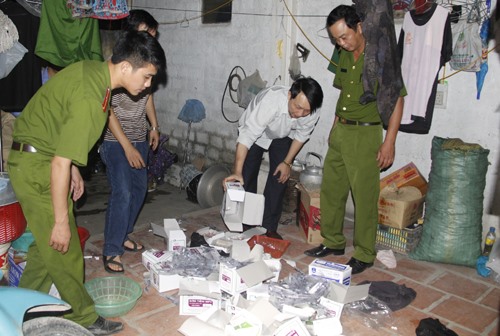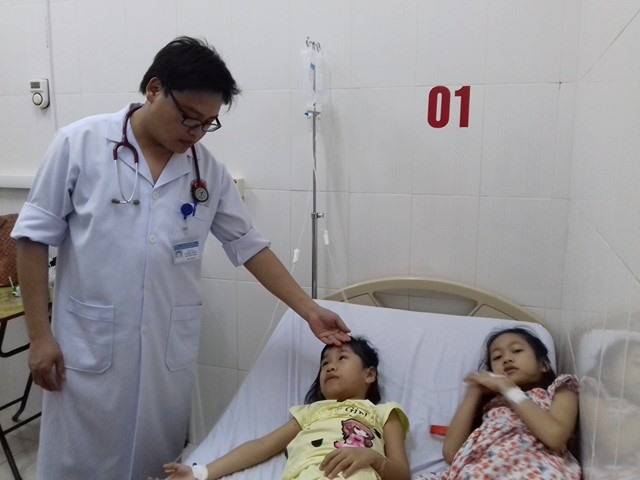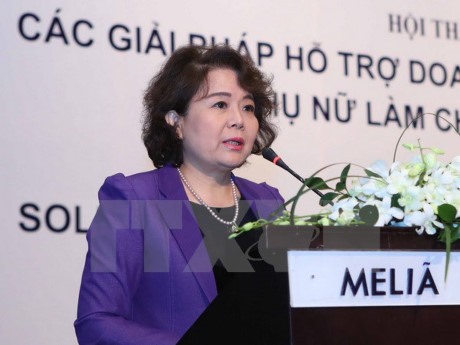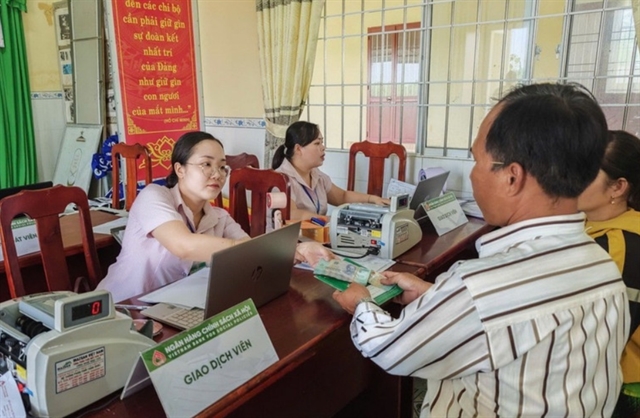
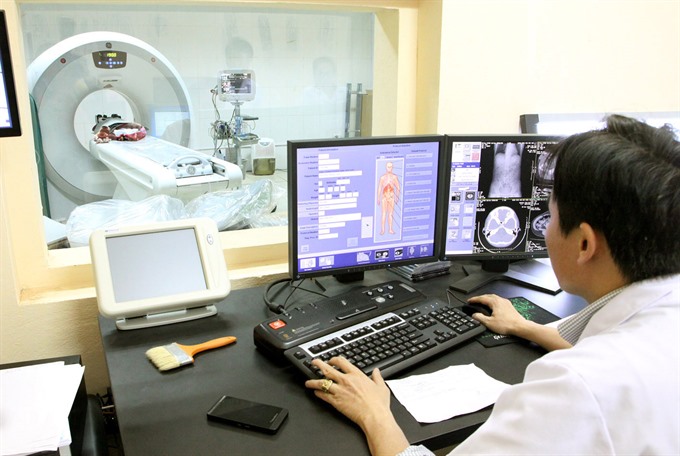 |
| Doctor examines a patient in central Nghệ An Province’s Obstetrics and Pediatrics Hospital. The new technique will soon be transferred to city and provincial-level obstetrics hospitals to reduce overloading at the National Hospital of Obstetrics and Gynecology.— VNA/VNS Photo Dương Ngọc |
HÀ NỘI — A new surgical technique developed by renowned obstetric surgeon Nguyễn Viết Tiến, also Deputy Health Minister, could replace the IVF (in-vitro fertilization) method for thousands of infertile women.
The National Hospital of Obstetrics and Gynecology announced successful testing of the new technique last week.
It said the technique was studied and carried out by Tiến, known as the “golden hands” of Việt Nam’s obstetrics discipline.
The technique involves using a “catheter” to broaden the internal orifice of the uterus via an endoscopy through the womb and abdomen.
After more than 10 years of study, the technique was successfully deployed on two women diagnosed with secondary infertility.
The first patient, Nguyễn Thị Loan from the central province of Nghệ An, was diagnosed with secondary infertility 8 years after she’d had her first baby.
Doctors found that the she had an occlusion in the internal orifice of the uterus, preventing her from getting pregnant.
Both women were in good health following the surgery.
“A month after the operation, the women’s internal OS have become normal. They can have babies in the natural way after more than seven years of suffering secondary infertility,” Tiến said.
According to the doctor, the infertility rate in Việt Nam was 7.7 per cent at present. While either the wife or the husband or both can be the cause of infertility, leading causes for the woman were blocked fallopian tubes, occlusion of the internal orifice of the uterus, polycystic ovary syndrome, uterine malformation and endometriosis.
Recent studies have found that the rate of secondary infertility was about 60-70 per cent of all cases of infertility.
“The percentage is very high. Helping these couples have babies became a concern and a responsibility,” he said.
“After many years of working as doctor specialising in fertitlity treatment, I empathized with couples wanting babies,” Tiến told Lao Động (Labour) newspaper.
Fertility treatment is usually costly and takes many attempts to succeed, and many couples are left feeling hopeless.
In-vitro fertilization was an option not all couples could afford. In many cases, couples took five to 10 years to save the money. But, unfortunately, the women’s ovaries aged during this time, the doctor said.
The patients’ despair pushed Tiến and his colleagues to find an effective, affordable solution.
After years of research, the doctor was able to fashion a a new technique based on endoscopy of the womb and abdomen.
“I am really confident about the new method. Based on my experience, I am sure the patients will be able to have babies normally”, Tiến affirmed.
He said the new technique was very safe and the side effects were minimal. The operation itself just took a hour and a half.
Other methods carry high risks of complications, he said.
Thanks to the new technique, the Center for Reproductive Assistance is able to help dozens of patients every day.
“I can confidently say that with this technique, IVF or surrogate pregnancies can become a thing of the past,” Tiến said.
He said the technique will soon be transferred to city and provincial-level obstetrics hospitals to reduce overloading at the National Hospital of Obstetrics and Gynecology.
“However, one thing that concerns me now is that infertility treatment is not covered by health insurance,” Tien said.
In many developed countries, childless couples are covered for up to four IVF attempts, he said.
But in Việt Nam, even tests are not paid for by health insurance.
“In my opinion, the treatment has a humanitarian purpose, and we should consider this,” the doctor said. — VNS

